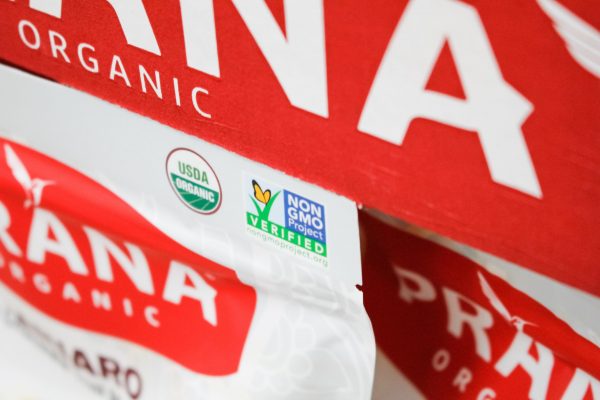More farmers seek organic certification as organic acres increase; Non-GMO certification sees steady growth and more inquiries as confusion surrounds new GMO labeling law
Despite the challenges of the COVID-19 pandemic, more U.S. farmers are getting their land certified while food brands are still seeking Non-GMO Project verification, especially as the new GMO labeling law (National Bioengineered Food Disclosure Standard) takes effect January 1, 2022.
Vinodthan Nayagar, director of the organic division at certification firm Where Food Comes From, says his company has seen a 36% increase in the number of organic crop farmers seeking organic certification this year compared to 2020.
“We’ve seen a large increase in the number of clients that have applied for certification this year compared to last year,” he says.
That could be due to an increase in organic farming acres in 2021. According to figures from Mercaris, an organic and non-GMO market research firm, total organic farming acres in the U.S. increased from 8.8 million acres in 2020 to 9.3 million in 2021, a 5.5% increase. The biggest increase was in organic field crops, which grew from 3.4 to 3.6 million acres in the past year, a 7.1% increase.
Nayagar sees organic acreage increasing. “Yes, acreage is definitely increasing year after year. Our farming clients are adding acres, particularly those growing corn or soybeans.”
Many of Where Food Comes From’s organic crop clients are based in the Midwest with some in California and others in southern states.
Fewer organic inspectors available
Despite the increase in organic crop clients, Nayagar said his company also lost some organic crop clients this past year.
“Some clients stopped farming organically, some went out of business because they are getting older or for health reasons, and some said they sold the farm because their children were not willing to work on the farm,” he says.
Nayagar says his company lost two clients that were growing organic hemp because they couldn’t find a buyer for the hemp. “It seems the industry doesn’t care about organic hemp because no one wants to buy it,” he says.
He also said that two organic dairies in New Mexico that had been supplying milk to Organic Valley had their contracts terminated. This is another indication of a challenging market for organic dairy following Danone’s termination of the contracts of 89 organic dairy farms in the Northeast last August.
But the COVID-19 pandemic hasn’t impacted farmers wanting to be certified. “I don’t think there has been a major impact of COVID on our crop clients. They are very comfortable with us doing onsite inspections on their farms,” Nayagar says.
Though he says one impact from COVID is that the cost for organic inspections has increased because there is a shortage of organic inspectors. Other organic certifiers are hiring organic inspectors, which is reducing the number of independent organic inspectors that are available.
“One of my jobs now to recruit as many inspectors as I can,” Nayagar says.
Non-GMO Project’s steady growth
At the Non-GMO Project, Hans Eisenbeis, director of marketing & communications, also sees increased growth of organic and non-GMO products. According to research by SPINS, organic and non-GMO product sales increased nearly 19% during the pandemic compared to 13% growth for natural products carrying neither certification.
“The highest growth rate was for products carrying both certified organic and Non-GMO Project seals,” Eisenbeis says.
The fastest growing categories for Non-GMO Project verification were bread and baked goods, plant-based milks, and oils and vinegars.
Overall, Eisenbeis says the Non-GMO Project has seen steady growth of 5% in the past year.
“We have seen a lot of engagement with Non-GMO Project participants who want to continue to provide consumers assurance that they are, in fact verified non-GMO.”
Meanwhile, acreage of non-GMO corn and soybeans decreased from 2020 to 2021, falling from 4.5 million to 4.0 million acres for non-GMO soybeans and 6.2 million to 5.8 million acres for non-GMO corn, according to data from Mercaris.
Unanswered questions with Bioengineered labeling law
The Non-GMO Project is receiving more inquiries now that the new GMO labeling law (National Bioengineered Food Disclosure Standard) has a mandatory compliance date of January 1, 2022.
“Our understanding is that many companies are realizing, relatively late in the game, that they want to look at non-GMO verification more closely in the context of the new BE (Bioengineered) label, especially where competitors might need to comply with the new law,” Eisenbeis says.
There are a lot of unanswered questions with the NBFDS. “It’s hard to know long-term what the impact of NBFDS will be on the entire industry, because it is a complex standard with—from our point of view—lots of loopholes. Plus, the fact that it is a detection-oriented standard, which means that many highly refined GMOs like oil and sugar will not need to comply, and animal-derived products like milk, meat and eggs are exempt,” Eisenbeis says.
Eisenbeis says non-GMO shoppers are confused and dissatisfied with the NBFDS, especially because companies can opt to use a complex QR code or a phone number “for more information” instead of a product label.
Also, “bioengineered” is a new term that is unfamiliar to most consumers.
The confusion over NBFDS could lead more consumers to seek out certified organic or Non-GMO Project Verified products, making those labels even more meaningful.
“At the end of the day, they will look for those ‘shortcuts to trust’ that third party certifications represent, so in that sense, the Non-GMO Project is well positioned to continue as the most meaningful and recognizable non-GMO certification,” Eisenbeis says.





